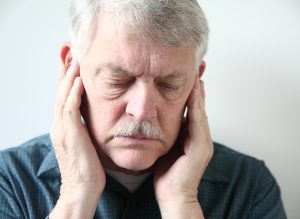Stress negatively affects the body in numerous ways. One danger is high blood pressure and the possibility of stroke. In fact, many studies have connected stroke and high stress related life styles due to high blood pressure caused by chronic stress. It is hence critically important to manage stress to lower blood pressure and hence lessen the chance of a stroke. Stress Management can play a key role in reducing stress and stress’ adverse effects on health.

The article, “Stress Can Help Bring on a Stroke, Study Shows” from HealthDay looks at a recent study that correlates high stress and stroke. The article discusses how individuals with more stressful work are more than twice likely to experience a stoke then someone else with less stress. The article also discusses the importance of reducing stress and the the role of Stress management. The article states,
“People who had severe work stress were more than twice as likely to have an ischemic stroke as those with no work stress, the investigators found. They were more than five times as likely to have a hemorrhagic stroke. For those living with either home or work stress, people who felt they could control what happens in their life had a lower stroke risk than those who felt they did not have control.”
“Stress Can Help Bring on a Stroke, Study Shows”. HealthDay. December 27th, 2022. U.S. News
To review the entire article, please click here
Commentary:
Strokes are one of the leading causes of death and disability in the U.S., and they can have a devastating effect on individuals and their families. But can stress really cause a stroke? In this blog post, we’ll take a look at the link between stress and strokes, what the warning signs of a stroke are, and how to recognize the symptoms of a stroke.
What is a Stroke?
A stroke occurs when the blood supply to a part of the brain is blocked or reduced. This can be caused by a blocked or burst blood vessel, or it can be caused by a blood clot that forms in the brain. When the blood supply is blocked, the affected brain cells can’t get the oxygen and nutrients they need, and they begin to die. This can lead to serious and potentially life-threatening complications.
The symptoms of a stroke depend on which part of the brain is affected. Common signs of a stroke include sudden weakness or numbness in the face, arms, or legs; difficulty speaking or understanding what others are saying; difficulty seeing in one or both eyes; confusion; difficulty walking; and loss of balance or coordination.
What is Stress?
Stress is a physical and emotional response to a perceived threat. It’s a normal part of life, and it can be beneficial when it motivates us to handle difficult situations. But when stress becomes chronic, it can have serious physical and mental health consequences.

Stress can be caused by a variety of factors, including work, relationships, money problems, or health issues. It can also be caused by external factors, such as a traumatic event or a major life change. When people are under a lot of stress, they may feel overwhelmed, anxious, or irritable. They may also experience physical symptoms, such as headaches, muscle tension, chest pain, and stomach problems.
The Link Between Stress and Strokes
Studies have found a link between stress and stroke risk. Stress can increase the risk of stroke by increasing blood pressure, causing unhealthy behaviors such as smoking and drinking, and increasing inflammation. Stress can also cause changes in hormones, which can have an effect on the cardiovascular system.
It’s important to note that while stress can increase the risk of stroke, it is not a direct cause of stroke. People who are under a lot of stress are more likely to have a stroke, but it is not the direct cause of the stroke.
The Warning Signs of a Stroke
It’s important to recognize the warning signs of a stroke, so that you can get help as soon as possible. The most common warning signs of a stroke are sudden weakness or numbness in the face, arms, or legs; difficulty speaking or understanding what others are saying; difficulty seeing in one or both eyes; confusion; difficulty walking; and loss of balance or coordination.
If you or someone you know is experiencing any of these symptoms, it’s important to seek medical help right away. Time is of the essence when it comes to strokes, and the sooner you get treatment, the better the chances of recovery.
Stress Management Techniques
There are a number of ways to manage stress, and it’s important to find a technique that works for you. Exercise, yoga, meditation, and relaxation techniques can all be effective in reducing stress. Additionally, getting enough sleep, eating a healthy diet, and engaging in hobbies can help to reduce stress levels.
It’s also important to have a strong support system. Having friends and family members who you can talk to and rely on can help to reduce stress levels. Additionally, talking to a mental health professional can be beneficial, as they can help you to identify and work through the sources of your stress.
How to Recognize the Symptoms of a Stroke
Stroke symptoms can vary from person to person, and it’s important to be aware of the warning signs. Some of the most common symptoms include sudden weakness or numbness in the face, arms, or legs; difficulty speaking or understanding what others are saying; difficulty seeing in one or both eyes; confusion; difficulty walking; and loss of balance or coordination.
If you or someone you know experiences any of these symptoms, it’s important to seek medical help right away. Time is of the essence when it comes to strokes, and the sooner you get treatment, the better the chances of recovery.
The Different Types of Strokes
Strokes can be classified into two main categories: ischemic strokes and hemorrhagic strokes. Ischemic strokes occur when the blood supply to a part of the brain is blocked or reduced, usually by a blood clot. Hemorrhagic strokes occur when a blood vessel in the brain bursts and bleeds into the brain.
The symptoms of a stroke can vary depending on the type of stroke, and the treatment for each type of stroke will vary as well. It’s important to recognize the signs of a stroke and seek medical help right away.
Treatment for a Stroke
The treatment for a stroke depends on the type of stroke and the severity of the damage. Treatment can include medications to help reduce swelling, prevent further brain damage, and improve blood flow. Physical therapy can also be an important part of stroke recovery, as it can help to improve mobility and strength.
Conclusion

Strokes are a serious condition that can have a devastating effect on individuals and their families. Stress can increase the risk of a stroke, so it’s important to practice stress management techniques and seek help if needed. It’s also important to be aware of the warning signs of a stroke and seek medical help right away if you or someone you know is experiencing any of the symptoms. By recognizing the signs of a stroke and seeking treatment, you can increase your chances of recovery and reduce the risk of further complications.
Please also review AIHCP’s Stress Management Consulting Certification and see if it meets your academic and professional goals. The program is online and independent study and open to qualified professionals seeking a four year certification in Stress Management.
Additional Resources
“Evidence of perceived psychosocial stress as a risk factor for stroke in adults: a meta-analysis”. Joanne Booth, etc, al. BMC Neurology volume 15, Article number: 233 (2015). Access here
“Prospective Study on Occupational Stress and Risk of Stroke”. Akizumi Tsutsumi, MD, etc, al.
“Can Stress Cause a Stroke?”. Cleveland Clinic. February 11th, 2021. HealthEssentials Cleveland Clinic. Access here
“Stress Linked to Stroke”. Salynn Boyles. August 30th, 2012. WebMD. Access here
“The emotional stress and risk of ischemic stroke”. Dariusz Kotlęga, etc. al . PMID: 2737514 DOI: 10.1016/j.pjnns.2016.03.006. National Library of Medicine. Access here
